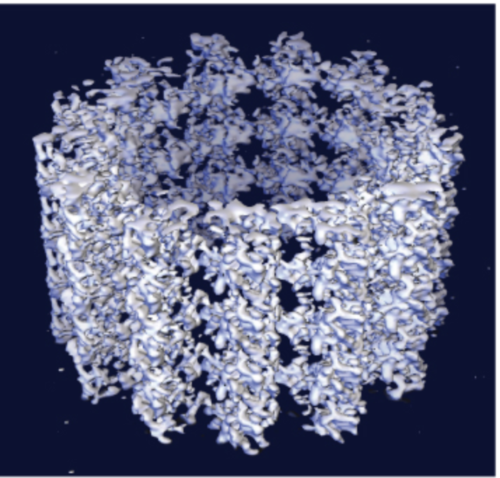Image courtesy of Wikimedia Commons.
Famous physicist Albert Einstein once said: “The distinction between the past, present, and future is only a stubbornly persistent illusion.” Time is an idea that has been talked about and debated for centuries. For physicists, philosophers, and others in between, the meaning of time and space and temporality has kept, and will continue to keep, people wondering.
Though some may believe that judgment of time is only left to complex, multicellular organisms, that is not quite true. In fact, researchers in Andre Levchenko’s lab at the Yale University Systems Biology Institute are currently looking into the cellular mechanisms that drive the molecular clock: a new way of conceptualizing time on a cellular level.
Researchers found this clock is controlled by two negative feedback mechanisms mediated by microtubule polymerization, GEF-H1, and GTPase RhoA. GTPase RhoA is a Ras homolog family member A that regulates actin reorganization, a mechanism that plays a role in cell migration and motility. Sung Hoon Lee, a postdoctoral researcher from the Levchenko Lab, said that though his background is actually in electrical engineering, he wanted to help build a systems-level understanding of a biological network.
Why do cells actually migrate? Lee said that it is because cells are dynamic in nature, and thus, cells migrate, proliferate, communicate, and die. For example, in the case of extreme and unwanted cell dynamism, metastatic cancer cells migrate throughout the body to invade other tissues. Levchenko joined in this explanation, saying that, “when an organism develops, there are many cases of cells undergoing movements to undergo relocalization.” This dynamic cellular movement and reorganization rarely occur in adults, where cells are generally pretty settled in the body. However, “the general idea for the cells is to figure out how to move and successfully relocalize to the desired location,” Levchenko explained.
While cell movement is normally studied in two-dimensional settings like Petri dishes, very little research has dug into the mechanisms of movement in three-dimensional settings like the body. In these 3-D settings, cellular activity is controlled by a squeezing motion from the posterior end of the cell that propels the cell forward. However, little is understood about how this squeezing movement operates.
Lee found that cells navigate the three-dimensional extracellular matrix — the complex network of molecules and proteins that forms the connective tissues between cells — using a periodic squeezing movement. The molecular clock controls the frequency of these squeezing movements and, consequently, the speed of cell movement. Furthermore, this clock is mediated by two coupled negative feedback loops. “Microtubule polymerization is an important component that can enhance the abundance of the molecule GEF-H1,” Lee said. This rapid polymerization of tubulin inside the cell underpins the dynamics of cell movement. “Microtubule polymerization can also inhibit the activity of GEF-H1. These two feedback loops modulate the molecular clock’s frequency,” Lee continued.
Furthermore, Lee found that cellular migration was mediated by cyclic changes in a small molecule called GTPase RhoA. And this GTPase RhoA is dependent on the activity and abundance of GEF-H1. By understanding the players underpinning cell migration, Lee was able to manipulate the frequency of the clock and make cells move, in some cases, three times as fast as they normally would. Funnily enough, Levchenko said, “For a while, the American Society for Cell Biology had an annual cell race where you could put engineered cells on race tracks and compete with other cells. While the competition does not take place anymore, Sung Hoon would likely win the competition.”
And while the research conducted by Lee has proven valuable in our present understanding of the dynamics of cell movement, the implications of his findings are arguably even more valuable. Through perturbation of the molecular clock’s frequency, they can potentially find new ways of controlling the speed of cell movement. In theory, manipulation of this clock could speed up the rate at which the repair of cell tissues occurs. Conversely, in the case of cancer metastasis, this same clock that controls aggressive tumor cells could be slowed down.
Looking towards the future, it is clear that, with the help of the scientific progress made by Lee and Levchenko, the field is on the brink of tremendous possibilities regarding systems biology and the molecular clock.

